Giochi dell'Oca e di percorso
(by Luigi Ciompi & Adrian Seville)
(by Luigi Ciompi & Adrian Seville)

|
Giochi dell'Oca e di percorso
(by Luigi Ciompi & Adrian Seville) |

|
 |

Torna alla ricerca giochi (back to game search) |
 |
| Gugnunc (The) Game | ||
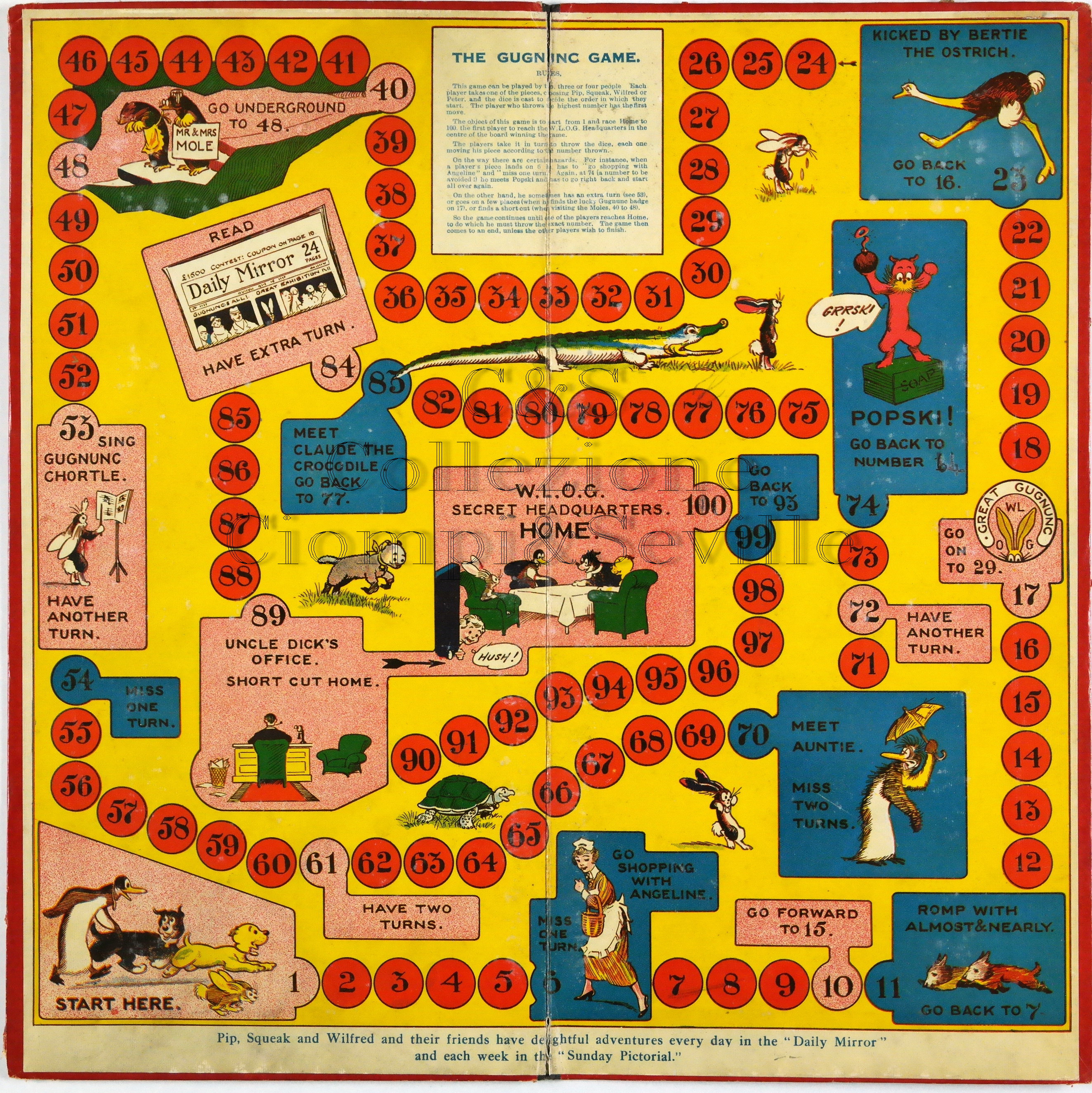 |
Versione stampabile
 |
Invia una segnalazione

|
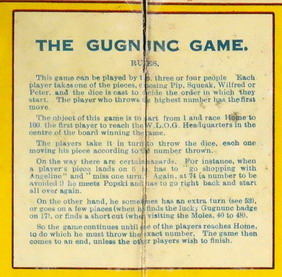 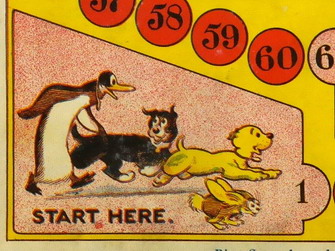 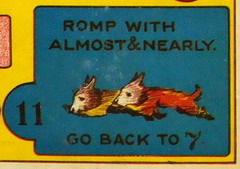 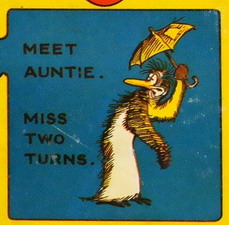 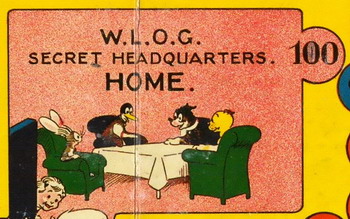 |
primo autore: | Anonimo |
| secondo autore: | Chad Valley Co. | |
| anno: | 1927 | |
| luogo: |
Inghilterra-Harborne |
|
| periodo: | XX secolo (2°/4) | |
| percorso: | Percorso di 100 caselle numerate | |
| materiale: | carta incollata su cartone (paper) (papier) | |
| dimensioni: | 360X360 | |
| stampa: | Cromolitografia | |
| luogo acquisto: | ||
| data acquisto: | ||
| dimensioni confezione: | ||
| numero caselle: | 100 | |
| categoria: | Letteratura scritta e disegnata, Belle Arti | |
| tipo di gioco: | Gioco di percorso | |
| editore: | Chad Valley Co. | |
| stampatore: | Chad Valley Co. | |
| proprietario: | Collezione A. Seville | |
| autore delle foto: | A. Seville | |
| numero di catalogo: | 1055 | |
| descrizione: |
Gioco di percorso di 100 caselle numerate. REGOLE: in alto. CASELLE: alcune con didascalia. REFERENZA 1 Game 42: The Gugnunc Game The Gugnunc Game. Harborne, England: Chad Valley Co., 1927. Color print on two-panel folding board, 36 x 36 cm. Ref.: Ciompi/Seville 1055. This game concerns the exploits of a set of cartoon strip characters, Pip, Squeak and Wilfred. This strip, The Adventures of Pip, Squeak and Wilfrid, was published in the Daily Mirror from 1919 to 1956, as well as in its sister paper the Sunday Pictorial in the early years. It was conceived by a journalist on the staff of the newspaper, Bertram Lamb (1887–1938, portrayed in the game as ”Uncle Dick”) and was drawn until c. 1939 by A[ustin] B[owen] Payne. The cartoon strip concerned the adventures of a supposedly orphaned family of animals. The dog, Pip, acted as “father,” while the “mother,” Squeak, was a penguin. Wilfred was the ”young child” and was a rabbit with very long ears. The names of two of the main protagonists are said to derive from the nickname ”Pipsqueak” of Payne’s batman in the First World War; Wilfred came along later. Over the years, many other characters were introduced, including a Russian bomb-maker and his dog Popski, Auntie (an elderly and jaded penguin), and Claude the Crocodile. The strips, and especially their spin-off publications in the form of annuals (beginning in 1923), were hugely popular with children in 1920s Britain, and became a craze. In 1927, the Pip, Squeak and Wilfred club began. It was named the Wilfredian League of Gugnuncs and organized many competitions and events for thousands of children. Gugnunc was a made up word, derived from Wilfred’s supposed baby talk. The game itself, of 100 spaces, is not obviously remarkable except as a remnant of a vanished world of innocent (but slightly surreal) whimsy. Nevertheless, space 74, which shows Popski on his soap box, holding a fizzing bomb, originally had the instruction: ”Go back to number 1,” though a later hand has altered the number to 66, presumably to avoid discouraging the young player. The phrase, ”Go back to square one” (meaning, ”start again after a failure”) has entered the English language but its origin is not known. The Oxford English Dictionary suggests it may arise from a game such as Snakes and Ladders, even though that game does not contain such an instruction; the present exhibit is a much better candidate. (Adrian Seville) Exhibitions: - "The Royal Game of the Goose four hundred years of printed Board Games". Exhibition at the Grolier Club, February 23 - May 14, 2016 (Prof. Adrian Seville). |
|
| bibliografia: |
1) SEVILLE, Adrian: "The Royal Game of the Goose four hundred years of printed Board Games". Catalogue of an Exhibition at the Grolier Club, February 23 - May 14, 2016. |
|
Vai alla ricerca giochi Vai all'elenco autori